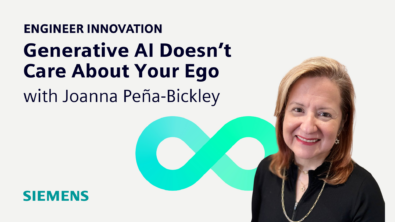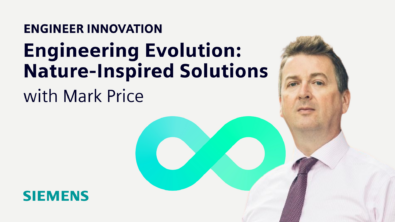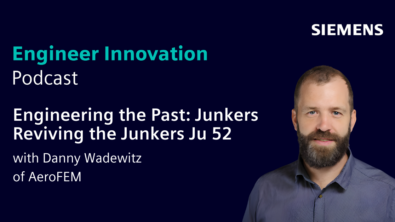Taking Agriculture Underground with Jamil Madanat
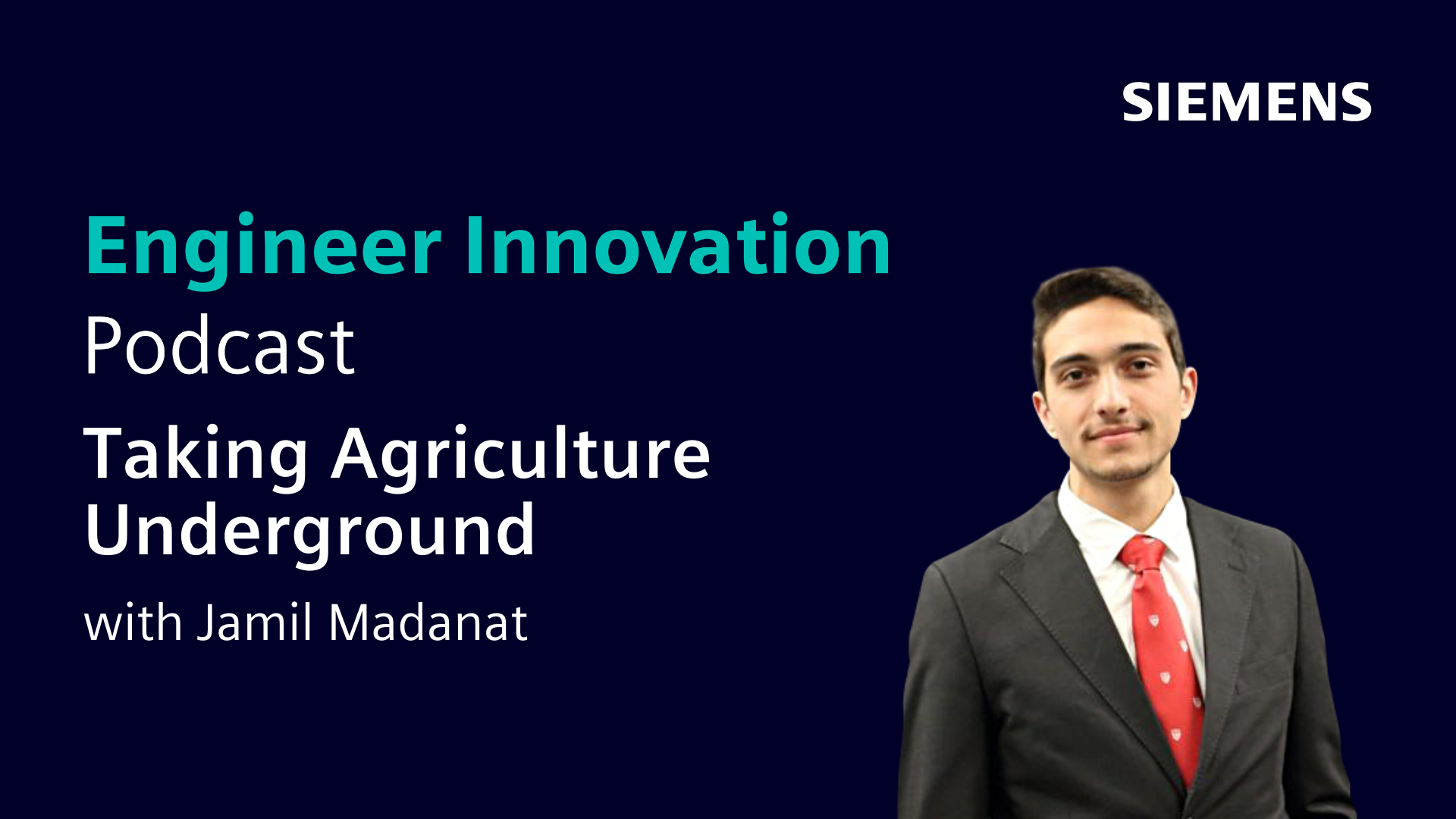
Listen to the Engineer Innovation podcast on
On today’s episode, we’re joined by Jamil Madanat, Chief Technology Officer of GreenForges, for a fascinating discussion about the innovative approach of GreenForges in agriculture and the potential of underground farming.
Key Takeaways:
- Repurposing LED heat waste for buildings.
- A controlled environment offers predictable crop growth amidst climate crisis.
- Underground farming: protection from pests, weather and contamination.
- The four phases of plant growth in GreenForges’ system.
- Proper monitoring of plant conditions and ensuring optimal growth.
- The role sensors and cameras play in monitoring plant health.
- The potential for flavour engineering in controlled environment agriculture.
- The effect consistency in plant shape, size and flavour has on market appeal.
- The significant design changes influenced by simulation results.
- The initial focus of leafy greens and the potential expansion to berries, mushrooms and algae.
This episode of the Engineer Innovation podcast is brought to you by Siemens Digital Industries Software — bringing electronics, engineering and manufacturing together to build a better digital future.
If you enjoyed this episode, please leave a 5-star review to help get the word out about the show.
For more unique insights on all kinds of cutting-edge topics, tune in to siemens.com/simcenter-podcast
- Repurposing LED heat waste for buildings.
- A controlled environment offers predictable crop growth amidst climate crisis.
- Underground farming: protection from pests, weather and contamination.
- The four phases of plant growth in GreenForges’ system.
- Proper monitoring of plant conditions and ensuring optimal growth.
- The role sensors and cameras play in monitoring plant health.
- The potential for flavour engineering in controlled environment agriculture.
- The effect consistency in plant shape, size and flavour has on market appeal.
- The significant design changes influenced by simulation results.
- The initial focus of leafy greens and the potential expansion to berries, mushrooms and algae.
Jamil Madanat:
Urban agriculture, which is a field that has been recently gaining popularity in the past 10 years, is about growing plants and farms inside buildings. It saw that even with urban agriculture, we’d only be able to cover a fraction of the food necessary to cover food demand for the year 2050.
Now, why going underground, we are opening this new dimension of growing plants that won’t necessarily interfere with the urban landscape. You can pretty much go underground, have your farm and then build on top of it a mall, a hotel. So you’re still using that land space for residents while going underground and growing your crops.
Stephen Ferguson:
My name is Stephen Ferguson, and you’re listening to the Engineer Innovation podcast. In today’s episode, we’re going to be talking about agriculture and how engineering simulation can help to feed an overpopulated planet. I talked to Jamil Madanat, who is the CTO of innovative startup, GreenForges, who are trying to move agriculture underground, both freeing up land for crop growth and also utilising the residual heat generated by large buildings.
My favourite thing about this episode is how GreenForges started off with a great idea, but used simulation to make it feasible. Jamil was a great guest, and it’s really interesting talking about some of the problems we’re going to have to solve in order to sustainably feed a planet with a population of 10 billion people.
For lunch today, I ate salad. In the industrialised world at least, we take it for granted that we can get what used to be seasonal food all year round. Today, I’m talking to Jamil Madanat, who’s the chief technology officer for GreenForges, a company that is developing technology to grow food underground at commercial scale. In their words, you can grow food anywhere now, even underground. Jamil, how are you doing today?
Jamil Madanat:
I’m doing great. Thank you, Stephen, for having me.
Stephen Ferguson:
Do you want to start off by explaining to us exactly who GreenForges are and what you’re trying to do?
Jamil Madanat:
Absolutely. So what GreenForges is trying to do is take agriculture underground. We’re using a technology called controlled environment agriculture or CEA. Some may be familiar with the way vertical farms work, which is growing plants inside buildings using LED technologies and hydroponics, or basically waters with nutrients, and that’s opposed to growing plants outside in a land.
Now, what we’re trying to do is really bring that vertical farm CEA technology underground to try to save on space and save on energy, and as I’ll describe further in our chat, how we’re leveraging that by going underground.
Stephen Ferguson:
How deep underground are we talking about, and what sort of facilities will these be?
Jamil Madanat:
That’s a good question. For now, for our pilot farm, we’re planning to go between 50 to 80 feet underground, that’s closer to 15 to 20 metres, with a 60-inch diameter, so closer to a metre and a half. The reason for that is we’re trying to work with drilling equipment that’s generally used for drilling pile foundations for buildings, so it’s easily accessible and has a diameter range between 40 to 60 inches.
With that, we’re limited on how deep we can go due to certain climatization constraints that we may face. So the aspect ratio has to be controlled and we’re governed by that. But that is to say, as soon as the technology is validated, we could pretty much expand the diameter and try to go as deep as necessary, and that even gives us more growing room and space.
Stephen Ferguson:
Are there any benefits of growing food underground? So what’s the thermal environment like as you get deeper and deeper?
Jamil Madanat:
So, the interesting finding that triggered a chain interest in the underground agriculture area is that the underground soil temperature tends to converge towards the annual average of a specific region below the five-metre point. For example, we’re looking into Ottawa. Throughout the year, the temperature could range from negative 30 or negative 40 to plus 30 or 40. The underground soil temperature converges closer to 8 to 9 Celsius below the five-metre mark.
And the interesting thing with this finding is, you create a very precise and controlled environment that you can grow plants in, and this can be particularly helpful, especially when sizing ventilation equipment. Generally, equipments are sized for worst-case scenario.
So sometimes you end up sizing your equipment, for example, if you need to cool a load at 35 Celsius for these three months, you end up buying large amounts of equipment that are designed to handle this brief period of heat, but then the rest of the year they could almost be unnecessary. So that’s a high CapEx. However, with the stable underground temperatures throughout the year, you don’t need such massive size of equipment. That’s one.
Two, you get a predictable energy load that will help also control the environment for the crops and create a more suitable, precise temperature and humidity control for them. I think this is mainly the benefits of going underground from an energy standpoint.
And the second point that’s really worth highlighting here is space. While doing market analysis, we came across a paper that’s trying to address food shortage in the next 30 to 40 years and exploring whether urban agriculture… So, land agriculture is currently how a majority of the world gets their food and crops, vegetables and fruits.
Urban agriculture, which is a field that has been recently gaining popularity in the past 10 years, is about growing plants and farms inside buildings. And with that paper, it saw that even with urban agriculture, we’d only be able to cover a fraction of the food necessary to cover food demand for the year 2050.
Now, why going underground, we are opening this new dimension of growing plants that won’t necessarily interfere with the urban landscape. You can pretty much go underground, have your farm and then build on top of it a mall, a hotel. So you’re still using that land space for residents while going underground and growing your crops.
Another advantage besides buildings is actually farms. As we know, lumber is a huge industry, and sometimes farmers come across a conflict between growing their trees for lumber versus utilising that land for crops, leafy greens, lettuce, berries, et cetera.
But by also going underground, you can maintain your lumber, and using a small space, as I mentioned with a 60-inch or a metre and a half diameter, if we go to this 50-foot or 15-metre depth, you can grow 2,000 heads of lettuce on a monthly basis with that such small space. So you can immediately see how quickly this scales up and how you can leverage that space dimension underground to expand our food production.
Stephen Ferguson:
I talked earlier about the fact that my lunch was shipped from halfway across Europe, but actually now, you could be growing the food in exactly the places it’s consumed, isn’t it? Because most people in the world, or increasingly, people are living in urban environments. And so, therefore, we could take that salad anywhere in the world and make it local, which I guess is another huge advantage of this.
Jamil Madanat:
Precisely. That is obviously not to mention all the carbon emission reduction and the cost associated with shipping and transportation. By growing locally, you just have quicker, faster, fresher access to food, pretty much just in your basement, in other words.
Stephen Ferguson:
I don’t know how, you perhaps know more about cultivation than I do, but the lettuce that I ate for lunch has obviously taken several days to get here, whereas stuff you’re growing could be straight… I was going to say straight out of the ground, straight out of the hydroponics bag onto the shelves within hours. And you’re genuinely eating really fresh food again, which has got to be an advantage for everybody, I guess.
Jamil Madanat:
Some may know, generally, to be able to have most of the produce shipped to you at a reasonable time, they’re generally taken out even before they’re mature. Whether it’s tomatoes or bananas, they’re grabbed from their original plant even just before maturity. And by the time they get there, obviously they’re just losing essential nutrients that they get up until they get to a proper maturity stage. Yeah, having fresh access to produce also preserves the nutrients that are in them as well, which is a big benefit.
Another benefit that I want to highlight, actually, when it comes to integrating with buildings is the cool symbiotic relationship you can have between plants and humans. So, the moment you have a farm underground and you have people living above ground, what you would have is be able to exchange.
Whether it’s the carbon dioxide coming out from the residents and feed it back into the farm, the oxygen produced by the plants, or some humidity, you can pull it back to the building, in addition to all the heat waste that is coming out of the LED lights that are used to feed the plants. You can feed it as a heat source for the building.
So, there’s an interesting symbiotic relationship from a circular economy standpoint that you can really achieve by integrating this structure between buildings and farms.
Stephen Ferguson:
That’s incredible. And so, talking again about seasonality, one of the biggest problems in the midst of a climate crisis is, we’re seeing less and less predictable weather conditions and more extreme weather conditions as well. And I guess what you’re saying by doing this, you can grow your crops in a completely predictable environment. And so, therefore, as we can expect the effects of the climate crisis to get worse and worse, we’re insulated from that a bit because we can control our growing environment, which is really important too.
Jamil Madanat:
Absolutely. So, the way we’re designing the forges now is they would be their own isolated silos, so to speak, or their own isolated containers. The system is designed so it can pretty much go in any environment while having the right climatization equipment in place.
But once you have it underground, it’s this sealed container underground that doesn’t have access to foreign contaminations, is a completely closed-loop cycle that is self-climatized, and the plants are also protected from any pests, so to speak, that may be present in soil or the external environment. Plus, weather variations on the surface won’t necessarily affect it as long as we keep it sealed and contained underground.
There are clearly some challenges that come with that approach, to keep it perfectly sealed, and obviously other challenges that come with the variation of underground temperature with respect to the surface. But it seems to be the most sound approach when you want to go through extreme weather is to have one leverage the stable underground temperature, so you don’t face these kind of strong winds or heavy rains or storms.
Or even earthquakes, they won’t be affected. The vertical structure would definitely be affected, but underground structure won’t be. So we definitely see a lot of structural and climate-related benefits with going underground as well.
Stephen Ferguson:
And I guess that means it’s difficult to know until you’ve properly built one, but that is also going to be a reduced dependency on pesticides and horrible chemicals, which most people if they thought about would be against anyway. So I guess, yeah, even though it’s a more technologically advanced way of growing food, hopefully it’ll be a cleaner way as well.
Jamil Madanat:
The way the plants are being fed is hydroponically, which, in other words, mean you have a water solution with the necessary nutrients monitored through sensors with every cycle, so that just the right amount of nutrients are being put into the water. And again, it’s an insulated and an isolated system. Pests have very little inlet to get in. The water is just circulating, and we’re not using any soil that may have some pests. It’s not exposed to the environment.
Even access to staff, you won’t have that access until the plants are being extracted and harvested from the modules. So while the plants are growing, they’re not coming into contact with the external environment as well.
Stephen Ferguson:
So you just mentioned nutrients and water. So three things as far, as I know, that plants need to survive or to grow and thrive are light, which you said is provided by LEDs. We don’t have soil, but you’ve got nutrients in your hydroponic fluids. How about water, because water’s an important consideration, isn’t it, and something also, which is stressed in lots of parts of the world as well? Where does the water come from, and how effectively do you use it?
Jamil Madanat:
By definition, a hydroponic solution is a combination of water and nutrients. So the plant roots would see a stream of water running towards the back edge of the module. So just to describe the structure a bit for visual purposes, what we have underground happening is, we have this annular shape radius of vertical modules stacked on top of each other growing, for example, lettuce plants. And at the back of them, so facing the backward casing, you’d have the roots, which are open to a stream of water that is mixed with nutrients. So, that’s how they get the water and the nutrients.
And the water passes through all the roots from the top to the bottom and gets collected at the bottom of the forge and recirculated. So, pumped back up to go through a filtration and sensor stage, to assess all the missing nutrients, and gets re-fed back to the tank. The tank temperature is adjusted back, obviously because plants are super sensitive to temperature variation, especially in water, and then the water is fed back again.
So, the circularity of the water being used is pretty, pretty high. We’re aiming something about 95%. At times, the water has to be completely flushed just because of any nutrient residue or any kind of potential debris that may be found, although we use multiple filtration stages. But to a large extent, the water can be recycled completely.
Stephen Ferguson:
And obviously, the irrigation requirements are much lower than for a conventional salad farm or lettuce farm.
Jamil Madanat:
Absolutely.
Stephen Ferguson:
Because if you’re going to grow crops in hot conditions in the ground, there’s going to be lots of evaporation, and so, that has to be another huge benefit. So, let’s move on to talk a bit more about the technology. We’ve talked about some of the benefits and some of the challenges, but in terms of technology, clearly you’re going to go 50 feet down. Are you going to have lots of farmers, human farmers down there manipulating your crops and tending to your crops? Or is there going to be a more automated capacity for helping them grow?
Jamil Madanat:
With such a tight space, so like a metre and a half of diameter, you wouldn’t really be able to fit people in there, especially with all the equipment, the lights and the plants. So it’s highly inadvisable that somebody attempts that. We’re relying a lot on mechanical automation and digital automation when it comes to the monitoring of the plant’s health, and mechanical automation when it comes to the extraction and retraction of these modules.
We’re considering two solutions. One is a fully automated one where you really just have to, at the beginning, just put the seeds at the germination stage, and then you would have pretty much robotic arms taking the plants through a conveyor belt and then dropping them inside these forges, mark the forges, seal it, and then extract it once ready.
Then you have a more conventional, but yet not dangerous in terms of personnel being close to the forge, which is at the time of inserting these modules, you would pretty much just put them into what we call an extraction-retraction system. So all you have to do is, obviously at a safe distance, just insert these modules inside their track, and then they will just get inserted inside the forge and stack themselves.
So yeah, in terms of personnel involvement, it would be minimal when it comes to what’s inside the forge. It’s mainly just handling, harvesting, cleaning and germination stages.
Stephen Ferguson:
In what condition do you insert the plants into the forge? Do you add literally as seeds or are they germinated at all or are they small kind of tiny plants?
Jamil Madanat:
There’s four phases. We put plant seeds inside what we call the grow medium that you have, put a seed and then germinate it in its own germination chamber. It will be a challenge to try to grow it autonomously inside of a forge without having a germination chamber, considering the different climatization need and the humidity need, temperature control, and water feed that is needed at the seed stage.
So, from a plant perspective, the seed needs special care almost compared to an infant versus as soon as it starts showing some roots. And then you can insert it into these modules underground. So, that moves from germination chamber to the grow modules and goes inside the forge.
And at that point, obviously, the watering would be easier. You’ll be able to see some roots popping out behind that grow medium. So the water would be able to touch these roots and feed the plants. And it would stay there up until the plants are ready. For example, in the case of lettuce, it would be 27 days. You’d extract the modules.
And so, the third phase is harvesting. Overhead conveyor belts would take all these modules, and then people would just extract the lettuce heads. And then it would go to the fourth stage, which is the cleaning, and then go back again to the germination stage.
Stephen Ferguson:
And I guess through that whole process, you can monitor the condition of the plant, how it’s growing, making sure it’s got no disease. Have you got that capability to look at each individual head of lettuce or whatever you’re growing?
Jamil Madanat:
Yeah. So we’ve got our software team working hard on integrating these sensors and the cameras to be able to monitor the plants’ health from making sure the right humidity is there. And obviously as we plant across a gradient of depth, temperature and humidity control is necessary, making sure the right amount of light at different stages of growth is there. Different kinds of crops also need different light spectrums and different humidity and temperature controls and different nutrients.
So nutrients are being monitored, light is being monitored, pressure, water flow, temperature and humidity, obviously. All these are being monitored and recorded on a live basis and assessed. Obviously, we’ve got embedded alarm systems that detect if there are any anomalies happening to be adjusted.
Stephen Ferguson:
And I guess because you can control almost every element of the environment, that gives you lots of potential downstream to do experiments and work out what the truly optimal growing conditions are for whatever you’re trying to grow. Because from crop to crop, you can change things, see what works, and that way get better, higher-quality produce, I guess. Is that [inaudible 00:18:19]?
Jamil Madanat:
Absolutely. Yeah, that’s the Holy Grail of controlled environment agriculture, where you get to a point where you’re fine-tuning the crops to be able to even do flavour engineering. So, you’d be able to engineer the kind of flavour you’d want in a piece of strawberry, for example, the size and the kind of bitterness and sweetness and what really goes into the flavour from the moment you smell it to the moment you swallow it. We’re not at this stage yet, but this definitely opens another door for flavour engineering.
And what’s worth highlighting here is just from the get-go, just from the fact that you’re able to control the environment, in the case of lettuce for example, you’re able to reduce what sometimes takes 40 days for a head of lettuce to grow in a land field. It would take 27 days to grow in a controlled environment, just because you’re just continuously feeding it the right amount of parameters or inputs that it needs to grow at a specific stage. And you’ll have more consistency when it comes to the plants that are produced in terms of shape and size and flavour.
Stephen Ferguson:
Which is an important thing for the market at the moment, isn’t it? Because people want good-looking food as well as tasty food as well. So making sure that it’s not blemished or not unusually shaped, is a commercial advantage as well.
Jamil Madanat:
That’s true. You’ll have way more consistency.
Stephen Ferguson:
Let’s talk a bit more about the engineering of this, then. So you’ve used Simcenter. I guess it was computational fluid dynamic simulation, to help you design this test facility. What lessons did you use from using simulation?
Jamil Madanat:
Simulation came at a very critical stage in our design process. I mentioned earlier about the different soil temperatures in different countries of the world, and I was referring, for example, our case study was Ottawa. And we were looking at, okay, well, below the five-metre mark, then the temperature stabilises, but then that begs a lot of questions. And now, we’re talking in the case of one city, but now just imagining how quickly this gets out of control as you try to predict the loads for different cities around the world.
So, while designing the climatisation equipment needed for the forge, we need to understand the loads of temperature, the loads of humidity produced by the plants, so we know what kind of duct size we need, what kind of volumetric airflow is necessary, and how large are these equipments going to look like.
Now, the challenge was, okay, based on empirical data, I know that below five metres, the temperature is going to be 9 Celsius. What about that gradient above, and how is that going to influence the rest of the forge? And when there’s temperature generation from inside the forge, how homogenous is the temperature distribution going to look like?
And what about the different types of soils surrounding the forge at different depths, so if you’ve got clay and if you’ve got sand, and then the moisture level in these different types of soils also contributes to that temperature differential because certain types of soils would absorb heat at a certain rate and to a certain extent versus other types of soils.
So these different variations playing all hand in hand, posed to be very challenging to be done manual calculations. And that’s when I sought after Maya HTT Simcenter software to be able to run a heat transfer simulation with these different kinds of constraints. And the problem we’re trying to solve is, okay, can you let me know what the humidity and temperature loads are for the forge at two different stages?
So that’s another complexity that I hadn’t mentioned. Also, the plants in the first two weeks doesn’t produce a lot of humidity, and then after these two weeks, the humidity generation increases exponentially. So, we need that kind of timescale integrated into that lifecycle of the plant under different soil conditions.
So I had to trace geological data for the pilot site that we were considering and provide Maya with the different types of soils at different depths and different moisture levels. And the idea was, all the heat generated inside the LEDs… And asked the question, can you tell me how much heat does the soil absorb, how much humidity or condensation happens on the casing because of that temperature differential, so we know how to size the forge. And that led to some pretty interesting findings afterwards.
Stephen Ferguson:
Always interested, when you’re dealing with unusual circumstances, where you get the data for the soil and the clay. Did you have to dig through dusty old textbooks in the library or is that sort of stuff available online? Because that’s always hard, isn’t it? It’s those kinds of basic conditions that you set up, and finding the physical properties of those things is a tough challenge for a novel situation.
Jamil Madanat:
Luckily, for the temperature profile of the soil underground, we were able to refer to the Canadian national documentation platform that has all the research basically centralised in their database and was able to find a paper from 1960 or something that had that profile, which obviously, wouldn’t change much. That’s a pretty relevant paper.
Now, for the soil breakdown underground, that was a bit of a challenge, and we had to work with a provincial partner with us in Quebec to commission a geological study of that area to be able to get that soil profile. As part of our pilot plant in a land in Quebec, initially, there was a geological study that had to be made to be able to get that soil data at different depths and different locations.
And that’s pretty much the data that I used, which gets converted into basically thermal conductivity of humid soil or humid clay or sand, et cetera. This kind of data is not easy to find, but we were lucky to be able to get it. Otherwise, the simulation would’ve been less relevant to our design for that specific location.
Stephen Ferguson:
So considering the first simulation you ran and the first design you looked at, and the final design, which I guess is the one that you intend to build into the pilot test project, how much has that changed as a result of simulation?
Jamil Madanat:
So, some of the insights that simulation revealed for us, one was basically, we were considering a smaller diameter with a bigger depth. So we were looking at a 40-inch diameter, 100-foot depth, and the simulation told us, ‘no can do.’ The amount of climatisation needed to be able to handle this much volume of air, you’d basically end up with a duct size that’s pretty much the size of the same hole, and you’ve got no room for anything else, no plants to fit in there. So what we had to do is reduce that aspect ratio, reduce the diameter, and the depth to be able to get a duct size that was reasonable to accommodate and not to compromise space for the plants.
Another interesting finding is we saw something closer to 20 to 25% heat reduction just because it was in an underground soil. So the soil was actually absorbing some of that heat, and we were getting geothermal cooling just because we were under the soil.
Generally, in a vertical farm scenario, this kind of cooling, you’d need to expense electricity to control, but here we were using passive energy sources, such as the soil, to absorb that energy, which was a very interesting finding for us. So that’s reduced energy cost and reduced condensation.
So, just because of the temperature differential between the soil and the heat inside the forge, you would get increased condensation on the surface of the casing, so that would lead to faster condensation off the water that you don’t really need to dehumidify. Humidification is a big problem that you have to deal with in the world of indoor agriculture. Here, this was happening passively also just because of the surface contact.
On a cold day, you get inside your car, and you find that mist or the condensation of air droplets. We’ll be seeing a lot of that, closer to 300 litres of water daily towards the end stages, of just these fine droplets condensating on the casing that we don’t necessarily need to dehumidify using active energy sources.
Definitely, it was eyeopening on many levels and saved us hundreds of thousands of dollars if we had went with the initial design of the forge because it would’ve failed miserably. Yeah, I would definitely consider that a successful use of simulation.
Stephen Ferguson:
I’m sure there was a few stressful moments early on, though, when you realised that all your assumptions were being challenged. So when you’re saying that, ‘oh, we couldn’t get an ideal level of thermal comfort in that space,’ it must’ve been quite a stressful time till you solved the problem.
Jamil Madanat:
It was an ‘oh no’ moment, for sure. We had to revisit all of our forecasting and our prediction sheets, but hey, it saved us a lot of engineering work and money that would’ve went to waste otherwise.
Stephen Ferguson:
That’s cool. So we’ve talked a lot about salad and green leaves, which is the initial proof of concept kind of crop. Is there much potential for using this technology for other types of vegetables?
Jamil Madanat:
Yeah, we’re starting with leafy greens, just because they’re less susceptible to damage when it comes to variations from temperature and humidity. They’re just more resilient as plants to start with. So, they’re better for experimentation. You would use these plants to test out different lights, orientations, or different climatisation methods, but pretty much you can grow a wide variety of crops if you’ve got the conditions in place.
So others that we’re exploring include berries, so strawberries. These require a lot of humidification control. So once we get a good grip on humidification, and dehumidification, it’ll open doors for us on the berries side. We’re also looking into other interesting paths, which are mushrooms and algae.
So mushrooms are interesting because they don’t require a lot of light, and you can use organic ways to be able to grow them, and you can just keep them sealed and dark inside these forges until they grow and you pull them up. It’s a very interesting direction that we’re considering. But again, first things first, need to validate just the underground functionality is in place.
And algae, in the case of algae, there’s a really interesting case study here that we’re digging deeper into because those could be integrated with factories and use all the waste CO2 because algaes love CO2. So, take all the waste CO2 and grow these algaes, and then produce biofuels at crazy amounts.
There’s so many different paths that we can explore when it comes to what you can grow underground. Just as I mentioned, first things first, is just validating that the technology works on a simplified level, and then, the sky’s the limit.
Stephen Ferguson:
And where are you now in the project?
Jamil Madanat:
We’ve built two labs now that we’re testing different type of integrations. So we’re a remote team, and our engineering team, we split up the work such that some would just run code, others would run simulations. And then, our two labs now, one is testing the extraction system and automating it. So we’re testing it over a 10-metre building and building a model, a prototype of the extraction system and seeing how it works.
And then the other one is, building, basically, a smaller version of the forge that is underground. We take, let’s say across a small section of it, and put it on the surface, and then we test how the digital integrations work, the electrical integrations, the climatisation, and the modules themselves, the water and nutrient feed.
So those have proven to be functional. Like now, we’re at the ready to go underground, but we’re facing some challenges when it comes to, again, the fundraising and then being able to get to a stage where we can launch a pilot. For reference, a pilot that at least we want to test, for example, three forges, different variations and different crops would cost in the range of five million. The market doesn’t seem under the right conditions so far to be able to invest in the technology at the moment, but our team is actively seeking fundraising opportunities to be able to test the pilot.
But from an on-surface standpoint, the prototypes seem to be functional. We’ve got beautifully looking lettuce. Our colleague who’s running the lab in his house, it’s actually in his garage, have shared with us the first GreenForge lettuce sandwich, and it looked terribly delicious.
Stephen Ferguson:
You couldn’t taste it yourself. You could only see it. Next time we talk to you, maybe we can each have a GreenForge lettuce sandwich each and compare the taste. So that’s really exciting. I know there’s challenges ahead as well, but the upside seems to be enormous to me. And when we started this podcast, we wanted to talk about digital twins, but I never guessed that we’d be talking about digital twins of a lettuce. So it’s been a really great chat, and I really appreciate your insight. And good luck for the future. Thank you, Jamil.
Jamil Madanat:
Appreciate your time, Stephen. Thank you so much.
Speaker 3:
This episode of the Engineer Innovation podcast is powered by Simcenter. Turn product complexity into a competitive advantage with Simcenter solutions that empower your engineering teams to push the boundaries, solve the toughest problems, and bring innovations to market faster.

Stephen Ferguson – Host
Stephen Ferguson is a fluid-dynamicist with more than 30 years of experience in applying advanced simulation to the most challenging problems that engineering has to offer for companies such as WS Atkins, BMW and CD-adapco and Siemens.

Jamil Madanat
Jamil has a bachelor’s degree in Mechanical Engineering from McGill University where he specialized in machine design and project management. For the past 8 years, Jamil has been leading social impact startups in a variety of industries around the world including agri-tech, tourism, web3, and software.
Take a listen to a previous episode of the Engineer Innovation Podcast: Engineer Innovation: Digital Transformation in the Built Environment with Salla Eckhardt on Apple Podcasts
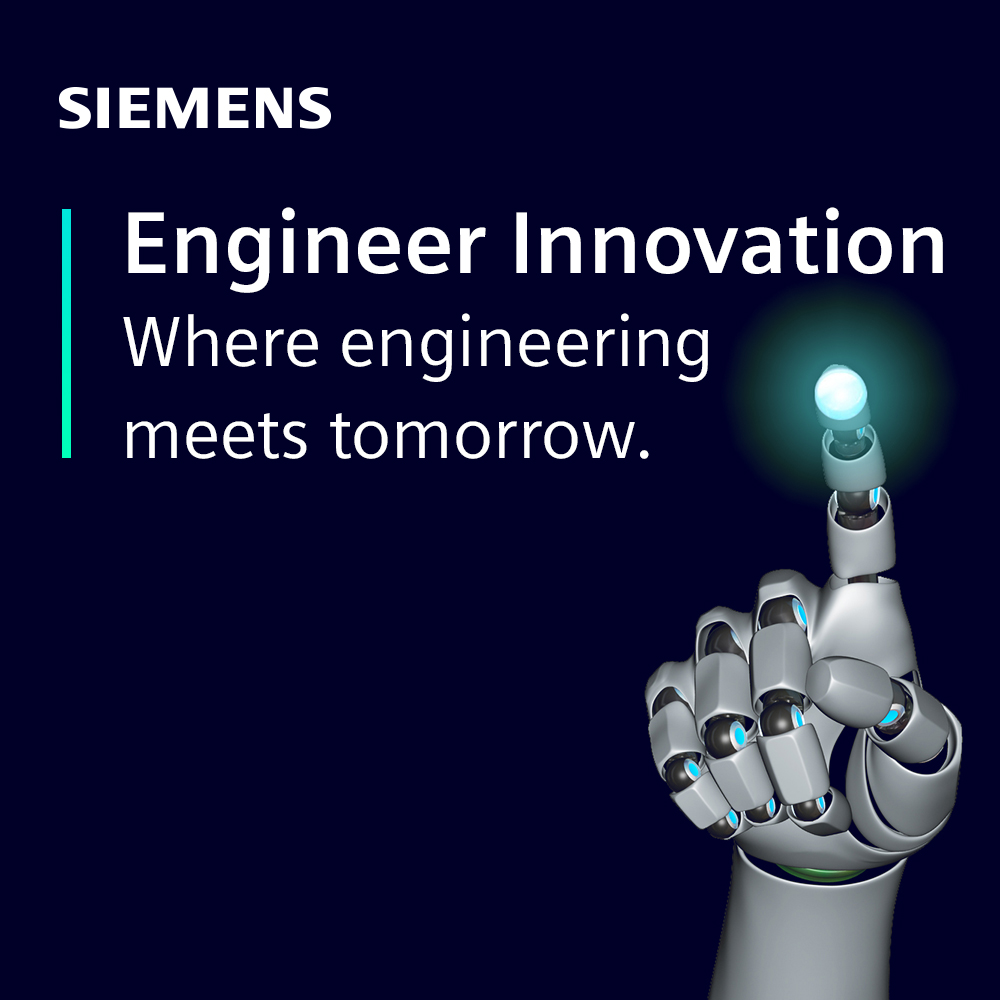
Engineer Innovation Podcast
A podcast series for engineers by engineers, Engineer Innovation focuses on how simulation and testing can help you drive innovation into your products and deliver the products of tomorrow, today.





